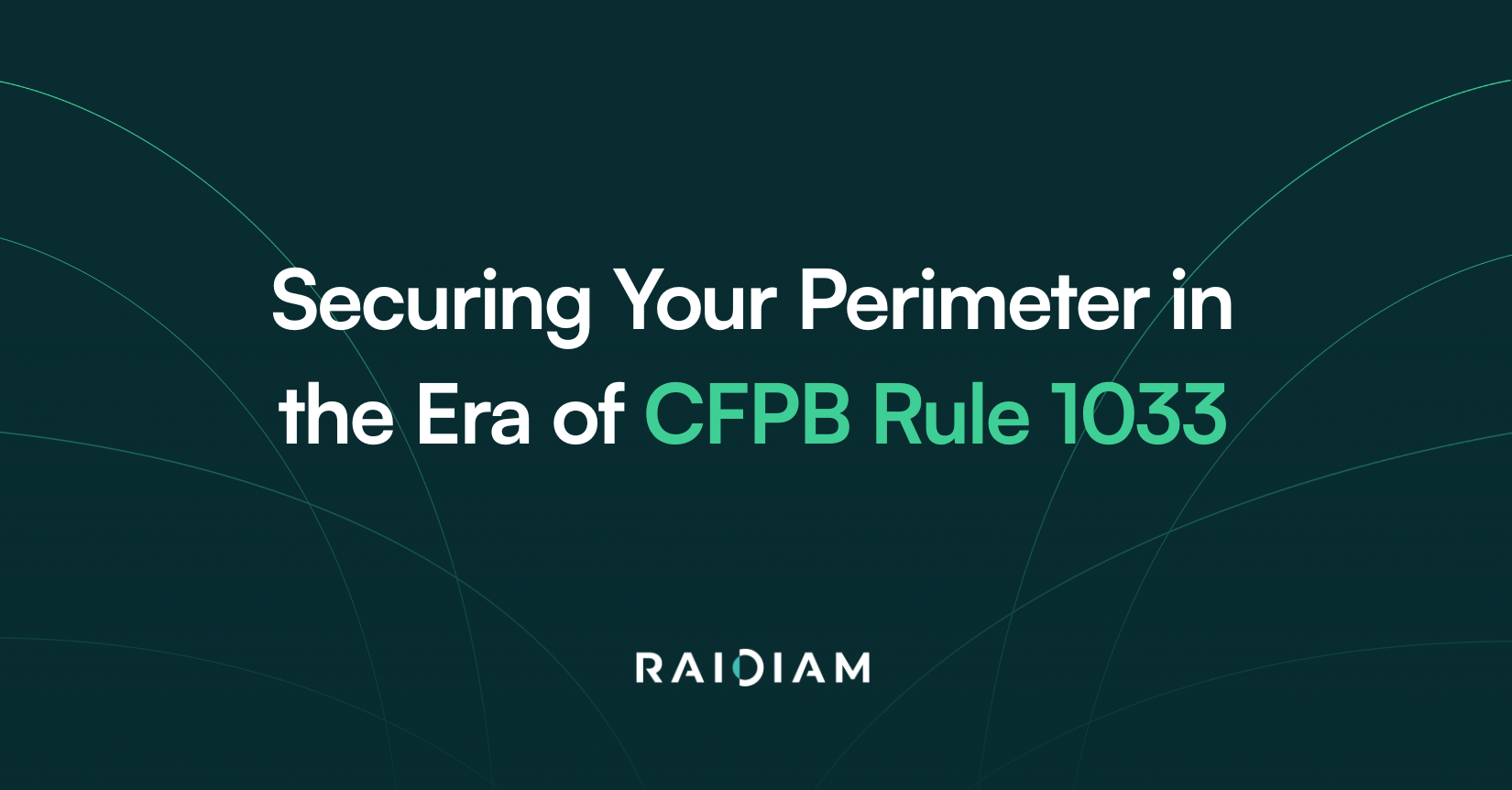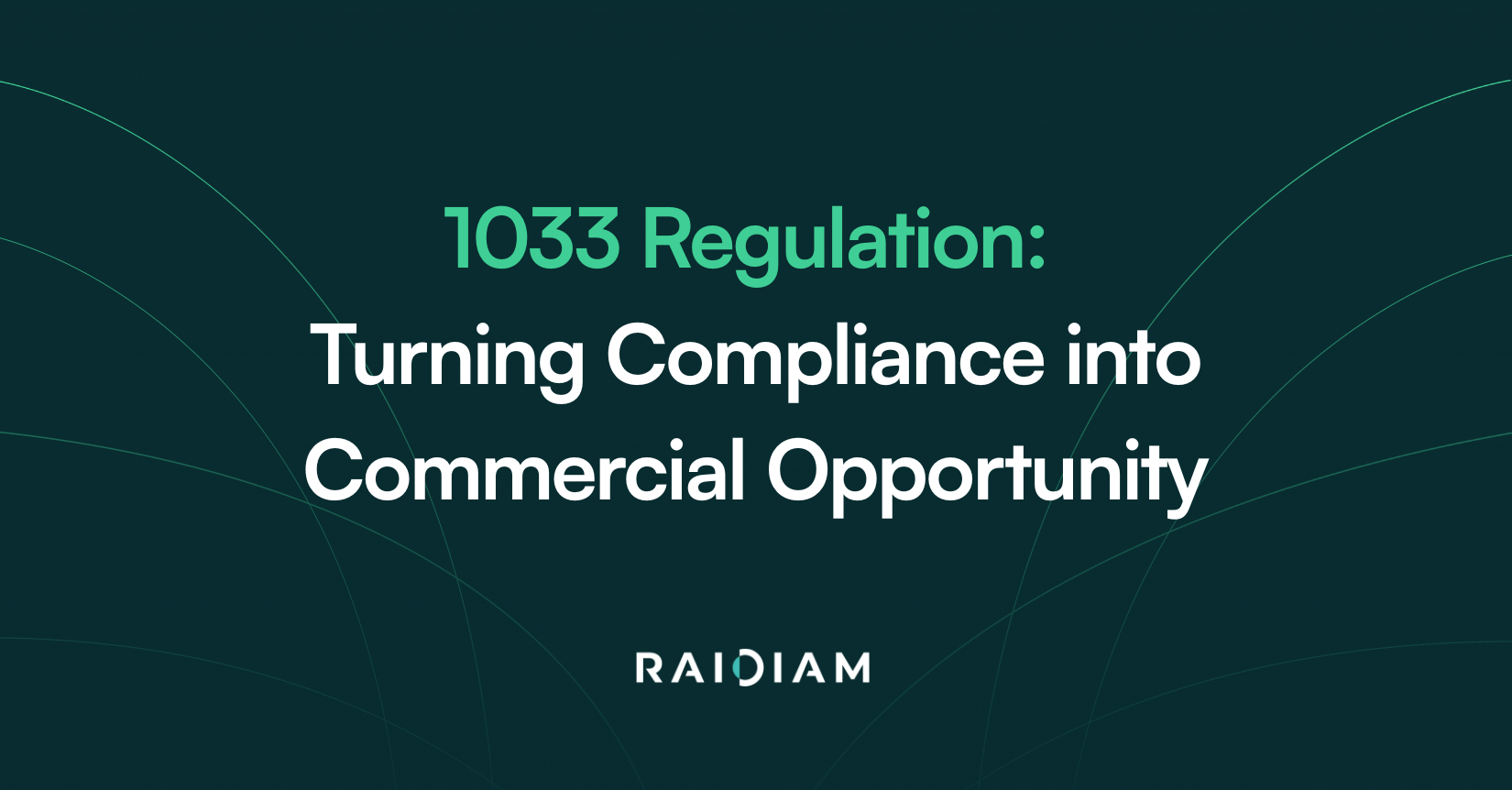
As the financial services landscape undergoes a transformative shift with the implementation of Rule 1033, executives face an unprecedented challenge in securing their digital perimeters. The change represents both a compliance hurdle, and a fundamental redefinition of how financial institutions must approach data security and access management.
The Evolving Perimeter in Financial Services
The concept of ‘securing the perimeter’ has deep roots in physical and cyber security. Traditionally, perimeter security referred to the implementation of firewalls and intrusion detection systems designed to create a virtual wall around an organisation’s network infrastructure. However, with the advent of cloud computing, remote work, and open banking regulations like Rule 1033, the definition of what constitutes a perimeter has changed.
The consequence of this has been the demise of traditional network boundaries and the necessity of changes to conventional security approaches in favour of zero trust. As financial institutions prepared to comply with Rule 1033’s mandate for secure consumer data sharing, understanding this shift becomes critical for executive leadership.
Understanding Rule 1033 and Its Security Implications
At its core, Rule 1033 mandates that consumers have the right to access and share their financial data with authorised third parties, such as fintech application providers and financial service providers. Under the regulation, banks and financial institutions - known as ‘Data Providers’ - must furnish covered data related to financial products in an electronic format that can be used by consumers and third parties.
The data types subject to sharing include sensitive information such as transaction histories, account information, and balances. This expanded data sharing presents a range of security challenges:
- Expanded attack surfaces: with the requirement to expose APIs for third party access, institutions face an enlarged attack surface requiring robust protection.
- Authentication challenges: ensuring that only authorised third parties gain access to consumer data demands sophisticated identity verification.
- Data protection during transit: financial information must remain secure as it moves between systems and organisations.
Why Perimeter Security Deserves Executive Attention
For cyber-minded executives, prioritising perimeter security in the context of Rule 1033 isn’t optional - it’s imperative. Here’s why:
- The stakes have never been higher - with 43% of cyberattacks targeting small businesses, and hackers attacking every 39 seconds, the threat landscape is intense. In the financial sector, where consumer trust is paramount, a security breach can be catastrophic to both operations and reputation.
- Compliance and security must work in tandem - Rule 1033 introduces a structured approach to managing and sharing consumer financial data, prioritising consumer autonomy, privacy and security. Executives must ensure their organisations not only comply with the letter of the regulation but embrace its spirit through robust security measures.
- The perimeter defence strategy has evolved - Modern perimeter security employs the ‘5 Ds’ approach - Deter, Detect, Deny, Delay and Defend. This layered security model creates multiple barriers that work together to prevent unauthorised access while giving security teams time to respond to potential threats.
- Identity has become the new perimeter - As traditional boundaries blur, identity has emerged as the new security perimeter. This shift requires a fundamental rethinking of security architecture, with continuous verification of user identities, device integrity, and contextual access parameters becoming central to protection strategies.
Leading from the Top: The Executive’s Role
C-suite executives play a critical role in integrating cybersecurity practices by setting the tone, and ensuring protocol compliance throughout the organisation. Security-minded CEOs unite their organisations around risk management, championing communication and collaboration from the top down.
To effectively prepare for Rule 1033 compliance, executives should focus on:
- Infrastructure and architecture evaluation: reassessing technological frameworks to ensure they can support enhanced data access and consumer control mechanisms efficiently.
- Operational capacity enhancement: bolstering capabilities to handle increased data access requests while maintaining high security standards.
- Data security: implementing robust protection against data breaches and unauthorised access, particularly for the expanded data sharing required by Rule 1033.
How Raidiam Connect Addresses Rule 1033 Perimeter Security Challenges
As financial institutions prepare for Rule 1033 compliance, solutions like Raidiam Connect offer a comprehensive approach to securing the new perimeter. Raidiam Connect is the world’s only out-of-the-box solution combining participant registration with application creation, credential generation, resource management and ecosystem discovery.
Key capabilities that address Rule 1033’s security requirements include:
- Financial-grade security: Raidiam protects sensitive data with certificate-based access, replacing traditional API keys with asymmetric authentication, eliminating an important vulnerability.
- Self-service technical onboarding: the platform enables seamless API adoption with a user-facing web portal, allowing Data Receivers to onboard themselves using intuitive self-service tools.
- Regulatory compliance: Raidiam keeps pace with changing regulations by ensuring alignment to a range of standards beyond Rule 1033, including (but not limited to) NIST 800, ISO27001, PCI DSS V4.
- Centralised control: organisations can grant and verify permission changes, including one-click access revocation, while maintaining a single pane of glass for access and credential management.
Future-Proofing Your Permission Strategy
As financial institutions implement Rule 1033 compliance measures, forward-thinking executives should also consider adopting zero trust principles to enhance traditional perimeter security. This approach continuously verifies users, systems and devices, eliminating implicit trust and substantially reducing the risk posed by internal threats and lateral movement.
Raidiam Connect’s asymmetric cryptography approach aligns perfectly with this evolution, enabling financial institutions to replace traditional keys and secrets with more secure authentication methods.
Conclusion
For cyber-minded executives navigating the complexities of Rule 1033 compliance, securing the perimeter isn’t just about preventing breaches - it’s about enabling secure, compliant data sharing that builds consumer trust. By understanding the evolving nature of perimeter security and implementing solutions like Raidiam Connect, executives can transform regulatory compliance from a challenge into a competitive advantage.
As the financial services industry moves towards open banking, those who prioritise their evolving perimeters will not only achieve compliance but will establish a foundation for innovation and growth in the new data sharing economy.
Ready to Secure Your Perimeter for the Open Banking Era?
If this article helped clarify how CFPB Rule 1033 is redefining perimeter security, our free guide will take you even deeper: “CFPB Rule 1033: The Insider Guide to Navigating API Security and Client Onboarding in Open Banking”.
This expert-written ebook provides essential strategies and frameworks for security leaders, architects, and compliance professionals navigating open banking infrastructure.
In the guide, you’ll learn:
-
How financial-grade API security mitigates the risks of expanded data access
-
What modern consent, identity, and trust frameworks look like in practice
-
How institutions can streamline secure third-party onboarding
-
How solutions like Raidiam Connect automate and enforce perimeter security at scale
Download the full guide now to build your foundation for secure, compliant, and future-ready data sharing.



